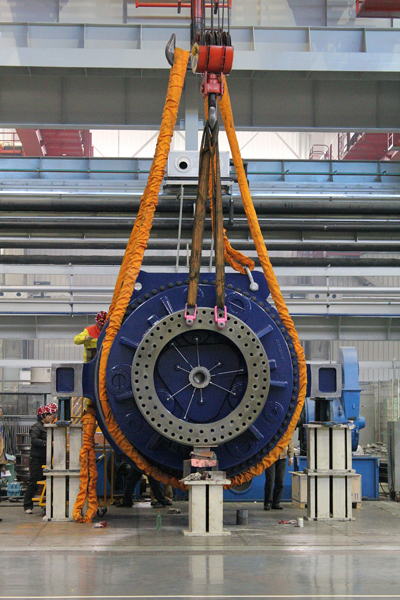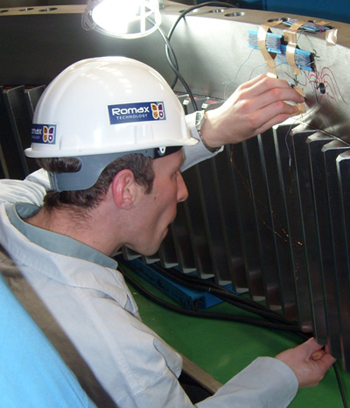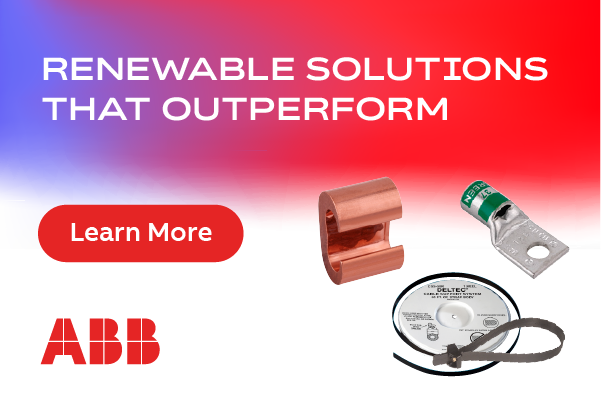Optimizing Gearbox Performance Through Wind Industry Collaboration
 Gearboxes are an integral part of most wind turbines, transforming the power from low speed and high torque at the input to high speed and lower torque at the output. Costly to buy, repair, and replace, effective design and reliable operation of gearboxes are critical to minimizing the cost of energy from wind turbines.
Gearboxes are an integral part of most wind turbines, transforming the power from low speed and high torque at the input to high speed and lower torque at the output. Costly to buy, repair, and replace, effective design and reliable operation of gearboxes are critical to minimizing the cost of energy from wind turbines.
The United States alone has over 61,000 megawatts (MW) of installed wind power capacity. But, North America has only a single, large turbine original equipment manufacturer (OEM; albeit, the world’s largest by install—GE), and no major gearbox designer or manufacturer headquarters. As a result, North American OEM representatives, owner-operators, component suppliers, re-manufacturers, and consultants collaborate to develop best practices, understand failure issues, and optimize gearbox performance, such that they can communicate their combined experiences to the international community.
Wind turbine gearboxes are tough and reliable machines. Given the long required service life (typically 20 years), operating conditions (including, large ambient temperature ranges and inaccessibility for maintenance), and loads (such as wind gusts, side loads from yaw error, and transient loads from grid faults), gearboxes are the most cost-effective way of getting power from the wind into a reasonably sized electrical machine.
Maximizing performance
Despite the overall effectiveness of gearboxes, some failure modes persist, and continuous improvement is essential to maximize reliability. Over time, design improvements have been made by gearbox manufacturers in response to turbine OEM specifications, and as better and better understandings of the particular challenges wind turbine applications face are gained.
One particular failure mode that’s receiving significant attention of late is the occurrence of axial cracks in gearbox bearings after numbers of operating hours that are much lower than the bearing’s intended design life. This subject was a key focus of National Renewable Energy Laboratory’s (NREL’s) Gearbox Reliability Collaborative (GRC) meeting in February 2014, and presentations highlighted recent progress in the investigations into this area (see www.nrel.gov/wind/grc/meeting_grc.html).
Due to the size, operating environment (i.e. a wind turbine nacelle), and commercial pressures, it hasn’t been always been possible to run the number and extent of prototype testing that a diligent engineer would prefer. However, new, high-torque dynamometers have recently been built at NREL’s NWTC facility in Colorado and Clemson University’s dynamometers in South Carolina, which can simulate the wind loads on a complete wind turbine nacelle. Major OEMs have also expanded their testing regimes ahead of the minimum requirements outlined by certification bodies, such as DNV-GL, applying even more rigorous standards.
New gearbox designs, for example, may now be subjected to extreme weather testing in cold chambers where rates of thermal expansion, lubricant viscosity, and material behavior are a challenge for a designer. Moreover, statistical approaches to analysis are employed to ensure tests are truly addressing inherently probabilistic failure modes.
Understanding failures
When gearboxes do fail, repairs or replacements are costly. Typically, the rotor hub and blades have to be removed, and the entire main shaft, main bearing, and gearbox are lowered to the ground by crane and trucked to a repair facility. There, the system must be disassembled, evaluated for condition, new parts ordered or made, re-assembled, and re-tested before being returned to service.
The refurbishment process is as challenging—or, even more challenging—than the process of building a new gearbox, as often the remanufacturer is working with limited information. Parts may be worn, for instance, and the original tolerances unknown. Some companies work to improve the gearbox design to reduce the possibility of repeat failures, by focusing on known weak areas of particular designs and developing gearbox upgrades, rather than carrying out like-with-like replacement.
For several years, NREL’s GRC program has focused on measuring and simulating what happens inside wind turbine gearboxes, based on field and dynamometer measurement campaigns. This program has contributed greatly to the understanding of gearbox design and simulations, allowing designers access to detailed verification data for testing against their modeling assumptions.
In fact, planning is now underway for the next phase of the GRC, which will focus on testing and modeling of a 1.5 MW turbine. NREL is working closely with the Department of Energy to develop a program to measure in-depth the loads that gearboxes see in operation—from the wind, as well as any transient loading from the electrical system. With this collected data, the aim is to “close-the-loop” with a good understanding of what happens inside a gearbox based on previous work, and a good understanding of what those loads really are in practice over a long period of turbine operation.
Setting standards
 The North American wind industry is committed to standardization as a way of disseminating best practices for the good of the whole industry. Representatives of the industry in the US helped develop the IEC 61400-4 Wind Turbine Gearboxes standard, which was published in 2013. This standard, which contains a wealth of valuable information and guidelines, will contribute to the wind community by disseminating good practices to designers, operators, and suppliers of gearboxes. It also serves to educate stakeholders, such as purchasers and developers.
The North American wind industry is committed to standardization as a way of disseminating best practices for the good of the whole industry. Representatives of the industry in the US helped develop the IEC 61400-4 Wind Turbine Gearboxes standard, which was published in 2013. This standard, which contains a wealth of valuable information and guidelines, will contribute to the wind community by disseminating good practices to designers, operators, and suppliers of gearboxes. It also serves to educate stakeholders, such as purchasers and developers.
The international effort to agree to this standard was time-consuming due to the many parties involved worldwide, and new best practices have been identified in the meantime. In North America, members of the AGMA Wind Turbine Committee are keen to publicize such practices and are developing an updated version of the AGMA 6006 Wind Turbine Gearboxes standard. The update will include methods that allow comparisons of gearboxes for their fundamental reliability.
A certifiable gearbox design that met the existing guidelines may have each component meeting the required probability of failure over the turbine life. If each gear and bearing was designed to a life of exactly 20 years, for instance, the resulting 20-year gearbox system reliability would be 20% or less. Therefore, determination of system reliability is a crucial part of the gearbox design process.
Industry wide efforts to optimize gearbox performance by standards’ bodies and NREL (on top of the efforts of the turbine OEMs themselves) are critical and essential to reducing the cost of energy from wind power. By collaborating and volunteering time to such efforts, the future looks bright for wind turbine gearboxes.
Chris Halse is the engineering manager, and Ashley Crowther is the VP of engineering at Romax Technology.
Romax Technology
www.romaxtech.com
Author: Chris Halse & Ashley Crowther
Volume: May/June 2014








